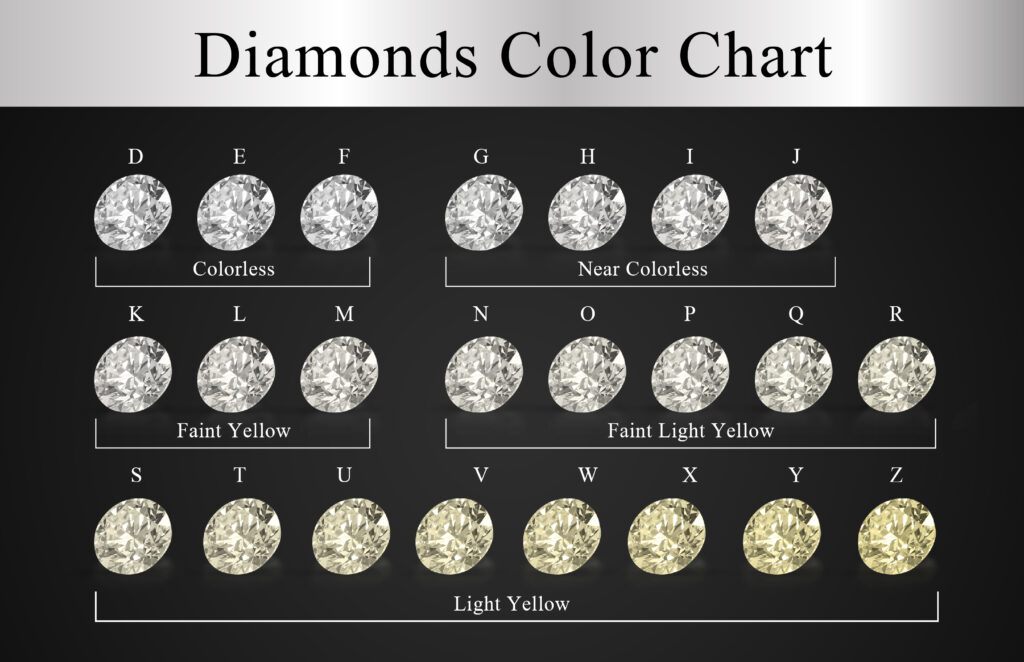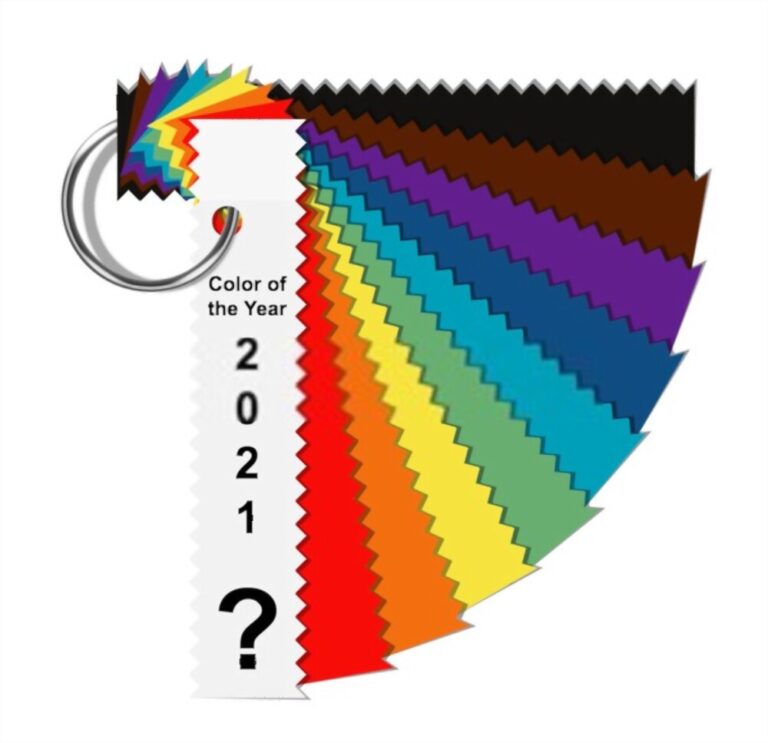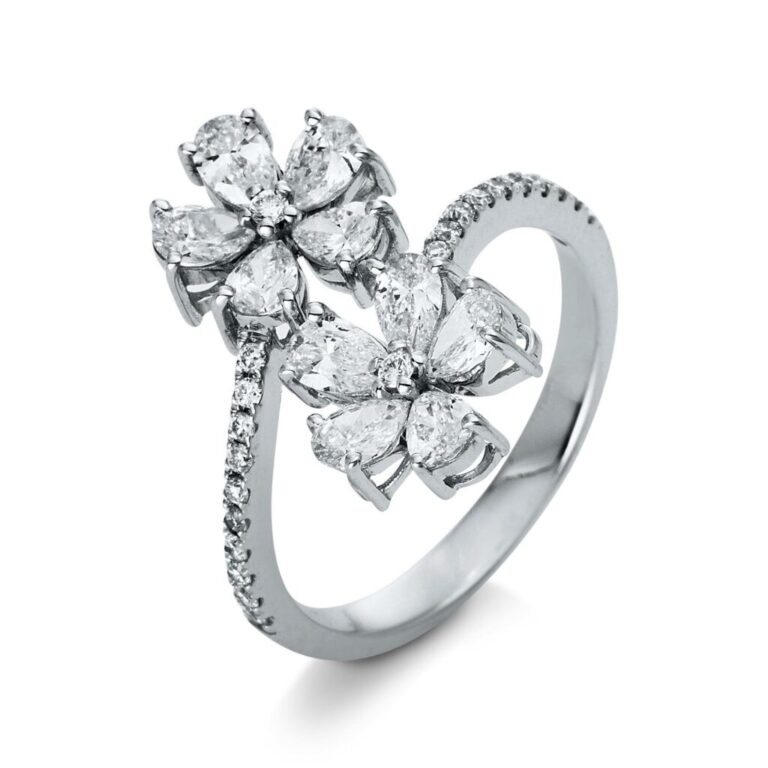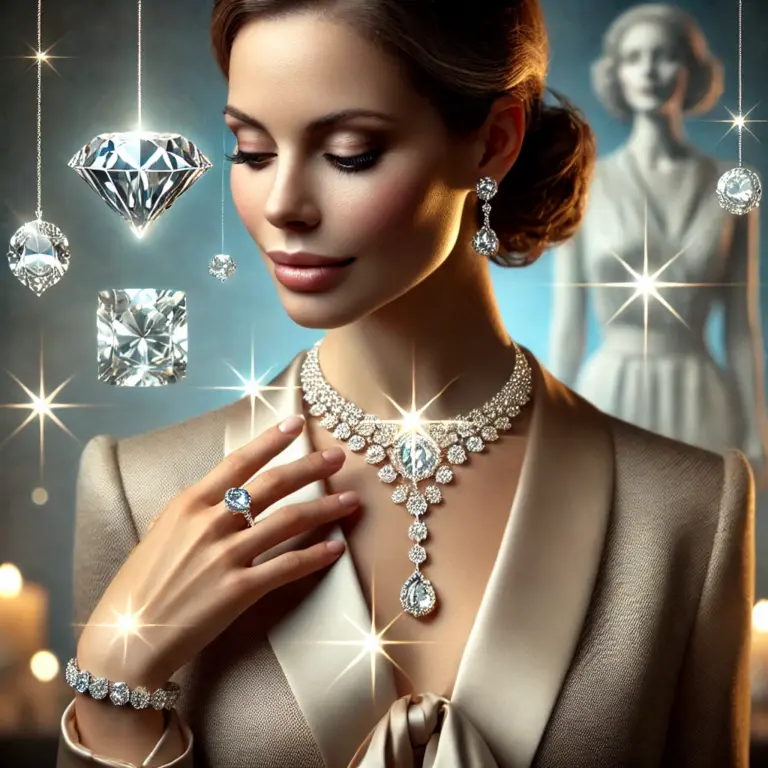
Diamonds come in many colours — yellow, pink, blue, purple, red, brown, and a lot more. Many people might believe that the most common colour of the diamond is colourless or they call it white. Yet this is a big misconception. In reality, the colourless diamond is the rarest one while the most common colour of the diamond is pale yellow or brown.
In the 1950s GIA developed a D-Z colour grade scale to describe the depth of colour of the diamond. It applies to gems which fall under the normal range of colour, which are yellow, brown, grey, and colourless being the rarest, thus the most expensive and valuable among them. The subtle colour differences in a gem, which might not be even evident to an untrained eye, affect the price and value of the diamond.
In the D-Z scale, each letter represents the tone and saturation of the colour. The more colour is visible, the lower the grade, meaning the more down the alphabet we are going. The “D” letter tells us that the diamond is colourless. The “Z” letter means that the gem has a visible tint of yellow (or is light brown or light grey). For instance, the gem that is yellower than Z grade and is visibly yellow is considered a fancy yellow.
You may wonder why the colour scale starts with the letter “D.” An interesting story behind it is that when Richard T. Liddicoat was developing a colour scale, back in the day, the dealers were describing the colour using different terms such as A, AA, AAA, B, C, white, fine white, no colour, etc. Because the letters “A”, “B”, “C”, and other similar repetitive letters in the alphabet were already used in the industry, even though they did not represent subtle colour variations a diamond may have, Richard T. Liddicoat decided to start the new colour scale that begins with letter “D”.
To give you a general idea of what each letter means, here is a short explanation:
D-E-F colourless;
G-H-I-J near-colourless;
K-L-M faint colour;
N-R very light grey, brown or yellow;
S-Z light grey, brown or yellow.
The process of colour grading is a bit of a tedious one and requires hours of training for the gemmologist to become a professional in it. The colour grading is the most accurate when it is done with an unmounted stone. In the laboratory, the gemmologist uses master stones which represent the depth of colour of each letter in the neutral environment. The master stones are cut into round brilliant, their minimum size is 0.25ct, and the clarity should be SI2 or better. The diamond that is examined is placed next to the master stone to compare and is judged based on the absence of colour. When the gem is mounted, the colour grading becomes much more challenging. The colours of G, H, and I look colourless face-up when it is a jewellery piece, therefore might be mistakenly seen as D, E or F. Usually people can spot some colour below the grade M. The colour of the gold also influences the perception of the gem’s colour. For example, in white metal, the yellow or brown diamond seems more saturated, whereas colourless diamonds are enhanced. On the other hand, the hints of yellow and brown are less apparent in the yellow gold.




